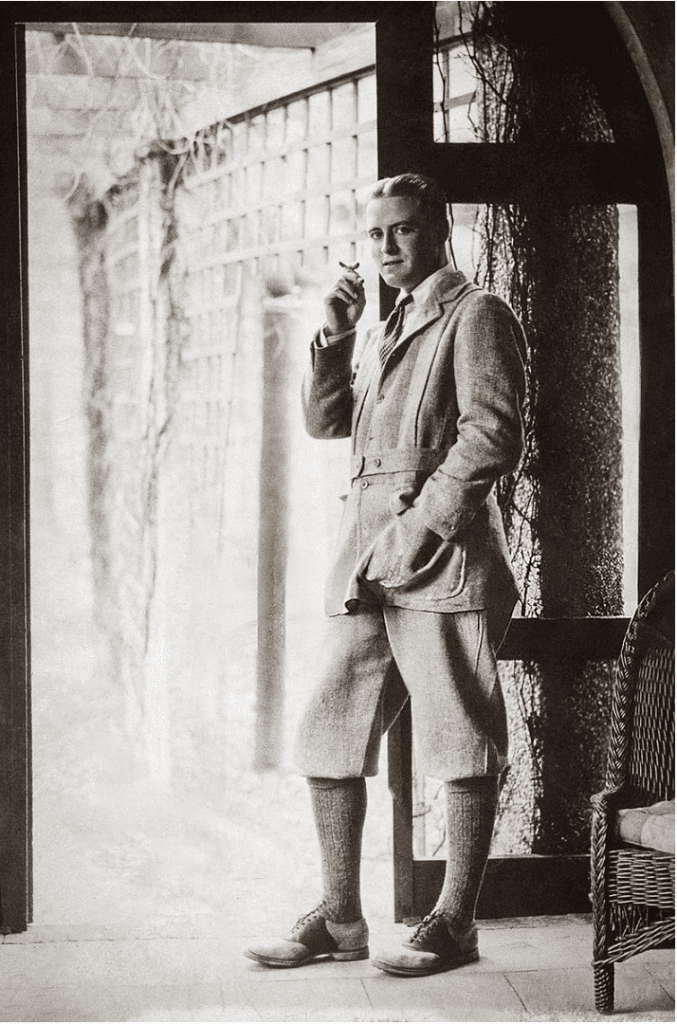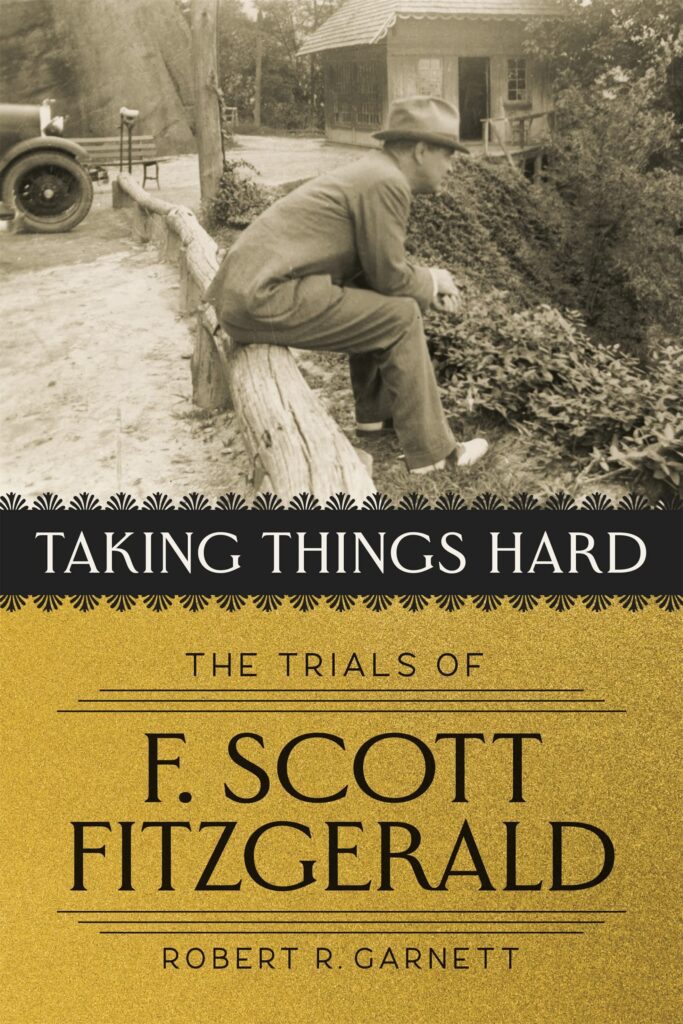Kitty Kelley Book Club: ‘Taking Things Hard: The Trials of F. Scott Fitzgerald’
By • July 12, 2023 0 1107

Reviewed by Kitty Kelley
Analyzing the author via his lesser known stories.
Success is said to be a bitch goddess who sprays splendor like a shooting star in the night sky. Many writers spend their lives chasing her, most to no avail. John Keats, Franz Kafka, Henry David Thoreau, Emily Dickinson, Herman Melville, Edgar Allan Poe — all died without ever experiencing her starshine.
Not so F. Scott Fitzgerald. The goddess wrapped him in riches, recognition, and renown at the age of 24 with his first novel, “This Side of Paradise.” Two years later, in 1922, he published “The Beautiful and the Damned,” and she showered him with international fame and prestige. Fitzgerald became the trumpeter of the Roaring Twenties, an era of champagne wealth and flapper frivolity that lasted as long as a bubble before it burst and plunged the country into years of depression. The bitch goddess took flight just as the trumpeter was embarking on the novel that would eventually become his legacy. He would not live long enough to savor its rewards.
Fitzgerald’s life has been chronicled in numerous biographies, letters, essays, scrapbooks, memoirs, notebooks, documentaries and films, a challenging cornucopia facing any modern-day author who aspires to examine the life that produced what many claim is the United States’ greatest novel. “If you want to know what America’s like, you read ‘The Great Gatsby,’ ” said Professor John Kuehl of New York University. “Fitzgerald is the quintessential American writer.”
Most scholars sniff at Fitzgerald’s short stories, but Robert R. Garnett, professor emeritus of English at Gettysburg College, has chosen to limn the writer’s life through some of those 180 tales in “Taking Things Hard: The Trials of F. Scott Fitzgerald.” The title springs from Fitzgerald’s assessment of himself as a scribe. In a letter to Ernest Hemingway, he wrote, “Taking things hard… That’s [the] stamp that goes into my books so that people can read it blind like brail.”
Hemingway agreed. “We are all bitched from the start, and you especially have to be hurt like hell before you can write seriously.”
Garnett concurs. “For Fitzgerald, the emotions of love and loss were far more compelling than any idea,” he writes. “[He] was not an intellectual.”
Starting with one of “the worst things F. Scott Fitzgerald ever wrote for publication,” Garnett pulls out a “deservedly unknown” 1935 short story published in Redbook, which he describes as “wooden, simplistic, puerile, awash in cliché and banality, with ninth-century colloquial rendered in a hodgepodge of cowboy-movie, hillbilly, and detective novel.” (Here, one is tempted to steer the professor to “The Elements of Style,” in which Strunk and White advise using nouns and verbs rather than adjectives and adverbs.)
The year 1935 is crucial to Garnett’s book — and to Fitzgerald’s life — because it marks “the crack-up,” when the magic had drained from the writer’s golden world and everything turned to dross. He was institutionalized for alcoholism, and his descent was chronicled in a 150-page, single-spaced journal that Garnett feels “is the most valuable single source for any period of his life.” The journal was written by Laura Guthrie, who met Fitzgerald when both were recuperating in Asheville, North Carolina. During that time, she became his confidant, advisor, and crying towel.
Fitzgerald later wrote three Esquire articles about his “crack-up,” which one biographer described as “sheer brilliance.” Garnett dismisses this as sheer nonsense. “Far from brilliantly written, the articles are littered with the cliches and tired metaphors of slipshod writing — ‘the dead hand of the past,’ ‘up to the hilt,’ ‘a place in the sun,’ ‘not a pretty picture,’ ‘burning the candle at both ends,’ ‘sleight of hand,” and ‘beady-eyed men.’ ” Garnett further fillets Fitzgerald’s series as “filled with vagueness, obscurity, facile generalizing, non sequiturs, and padding (a random diatribe against Hollywood, for example).”
Tinseltown was hell for Fitzgerald, who’d moved there in 1937, hoping to resuscitate his career and recapture vanished glory. Still married to Zelda, at the time institutionalized with schizophrenia, he moved in with Sheilah Graham, the nationally syndicated Hollywood gossip columnist, and lived with her until he died of a heart attack in 1940.
On the subject of Graham, Garnett sounds a bit puritanical, alluding to her “amorous past” and dismissing her as “ambitious, enterprising, attractive, hardworking, shrewd, and not over-scrupulous, she had climbed from… poverty to become a chorus girl, then journalist.” The professor judges her as “too conventional, vin ordinaire, to generate much emotion [from Fitzgerald] beyond comfort and gratitude.”
How interesting it might’ve been for an accomplished scholar such as Garnett to have examined Graham and her ascent in the world in comparison to that of Jay Gatsby in Fitzgerald’s masterpiece. Both working-class characters of questionable backgrounds and no education came to represent the American Dream. An analysis of such by an English professor could’ve added insight and scholarship to the corpus of F. Scott Fitzgerald. Alas, a missed opportunity.
Chances are, the bitch goddess will not be spraying splendor on Garnett’s treatise, but the professor can take comfort in the legion of Fitzgerald aficionados who will find some nuggets within “Taking Things Hard” to be worthy of gold.

Kitty Kelley. Courtesy of KittyKellyWriter.com.
Georgetown resident Kitty Kelley has written several number-one New York Times best-sellers, including “The Family: The Real Story Behind the Bush Dynasty.” Her most recent books include “Capturing Camelot: Stanley Tretick’s Iconic Images of the Kennedys” and “Let Freedom Ring: Stanley Tretick’s Iconic Images of the March on Washington.” She serves on the board of BIO (Biographers International Organization) and Washington Independent Review of Books, where this review originally appeared.


